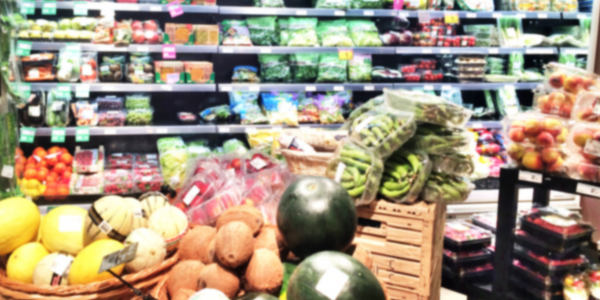Global Retail Firm Automates Competitive Data Extraction from the Web Using Denodo Data Virtualization

Customer Company Size
Large Corporate
Country
- Worldwide
Product
- Denodo Data Virtualization
Tech Stack
- Data Virtualization
- Web Automation
Implementation Scale
- Enterprise-wide Deployment
Impact Metrics
- Revenue Growth
- Productivity Improvements
Technology Category
- Platform as a Service (PaaS) - Data Management Platforms
Applicable Industries
- Retail
Applicable Functions
- Sales & Marketing
- Business Operation
Services
- Data Science Services
About The Customer
The profiled company is a leading global retailer. It designs, sources, and markets its products globally through a diversified network of retail, wholesale and franchise channels. The firm reported positive growth figures for the second time in a row when global markets were teetering from the fright of an economic downturn. In addition to innovative designs and aggressive brand building, its success is largely attributed to forward thinking digital marketing. Its aggressive use of social media to transcend geographical boundaries and appeal to the younger consumer base is an example of a key digital marketing initiative.
The Challenge
The profiled company is a leading global retailer that decided to extend its use of the digital domain by tapping into the wealth of competitor product and pricing data available on the web. It planned to collect this information and use it to drive its product and pricing strategy. However, the company faced challenges in acquiring and using competitive information due to the expensive and manual effort expended in extracting the data and keeping it updated, the incomplete and error-prone nature of manual acquisition, and the non-scalable nature of the extraction process that could not support company expansion.
The Solution
After a competitive proof of concept, the company selected Denodo as it met all of their project requirements and also exhibited a strong understanding of their business. Denodo provided a complete solution that included extraction of data from a variety web of sources, normalization of this data and integration into existing data workflows. The company has deployed Denodo’s data virtualization platform to leverage competitive information from the web. This happens in 3 stages – extraction, combination, and reporting. The Denodo Platform extracts and normalizes competitive data using its sophisticated web automation capabilities. The ITPilot module within Denodo navigates through competitor websites and extracts product information such as name, description, image URL, and price. The Denodo scheduler runs this automated process once a month to create a ‘snapshot’ of competitive data and stores it in a database for further analysis and historical reporting. The Denodo Platform then accesses the extracted data and post-processes the information into virtual data views. This includes data transformation and normalization, product de-duplication, and data aggregation. The virtual data views created within the data virtualization layer are used to feed custom and ad hoc user reports.
Operational Impact

Case Study missing?
Start adding your own!
Register with your work email and create a new case study profile for your business.
Related Case Studies.

Case Study
Improving Production Line Efficiency with Ethernet Micro RTU Controller
Moxa was asked to provide a connectivity solution for one of the world's leading cosmetics companies. This multinational corporation, with retail presence in 130 countries, 23 global braches, and over 66,000 employees, sought to improve the efficiency of their production process by migrating from manual monitoring to an automatic productivity monitoring system. The production line was being monitored by ABB Real-TPI, a factory information system that offers data collection and analysis to improve plant efficiency. Due to software limitations, the customer needed an OPC server and a corresponding I/O solution to collect data from additional sensor devices for the Real-TPI system. The goal is to enable the factory information system to more thoroughly collect data from every corner of the production line. This will improve its ability to measure Overall Equipment Effectiveness (OEE) and translate into increased production efficiencies. System Requirements • Instant status updates while still consuming minimal bandwidth to relieve strain on limited factory networks • Interoperable with ABB Real-TPI • Small form factor appropriate for deployment where space is scarce • Remote software management and configuration to simplify operations

Case Study
Digital Retail Security Solutions
Sennco wanted to help its retail customers increase sales and profits by developing an innovative alarm system as opposed to conventional connected alarms that are permanently tethered to display products. These traditional security systems were cumbersome and intrusive to the customer shopping experience. Additionally, they provided no useful data or analytics.

Case Study
How Sirqul’s IoT Platform is Crafting Carrefour’s New In-Store Experiences
Carrefour Taiwan’s goal is to be completely digital by end of 2018. Out-dated manual methods for analysis and assumptions limited Carrefour’s ability to change the customer experience and were void of real-time decision-making capabilities. Rather than relying solely on sales data, assumptions, and disparate systems, Carrefour Taiwan’s CEO led an initiative to find a connected IoT solution that could give the team the ability to make real-time changes and more informed decisions. Prior to implementing, Carrefour struggled to address their conversion rates and did not have the proper insights into the customer decision-making process nor how to make an immediate impact without losing customer confidence.

Case Study
Ensures Cold Milk in Your Supermarket
As of 2014, AK-Centralen has over 1,500 Danish supermarkets equipped, and utilizes 16 operators, and is open 24 hours a day, 365 days a year. AK-Centralen needed the ability to monitor the cooling alarms from around the country, 24 hours a day, 365 days a year. Each and every time the door to a milk cooler or a freezer does not close properly, an alarm goes off on a computer screen in a control building in southwestern Odense. This type of alarm will go off approximately 140,000 times per year, equating to roughly 400 alarms in a 24-hour period. Should an alarm go off, then there is only a limited amount of time to act before dairy products or frozen pizza must be disposed of, and this type of waste can quickly start to cost a supermarket a great deal of money.

Case Study
Supermarket Energy Savings
The client had previously deployed a one-meter-per-store monitoring program. Given the manner in which energy consumption changes with external temperature, hour of the day, day of week and month of year, a single meter solution lacked the ability to detect the difference between a true problem and a changing store environment. Most importantly, a single meter solution could never identify root cause of energy consumption changes. This approach never reduced the number of truck-rolls or man-hours required to find and resolve issues.







